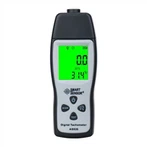Technical Specification of the DC Voltage Regulator
DC regulated power supply technical indicators can be divided into two categories: one is the characteristic indicators, reflecting the inherent characteristics of DC regulated power supply, such as input voltage, output voltage, output current, output voltage adjustment range; the other is the quality indicators, reflecting the strengths and weaknesses of the DC regulated power supply, including stability, equivalent resistance (output resistance), ripple voltage and temperature coefficient and so on.
1, the characteristics of indicators
(1) Output voltage range
DC regulated power supply operating conditions in line with the normal operation of the output voltage range. The upper limit of this index is specified by the maximum input voltage and minimum input - output voltage difference, while its lower limit is determined by the reference voltage value inside the DC regulated power supply.
(2) Maximum input-output voltage difference
This index characterizes the maximum input-output voltage difference allowed under the normal working conditions of the DC regulated power supply, and its value mainly depends on the voltage withstand index of the adjustment transistor inside the DC regulated power supply.
(3) Minimum input-output voltage difference
This index characterizes the minimum input-output voltage difference required to ensure the normal working conditions of the DC power supply.
(4) Output load current range
Output load current range is also known as the output current range, in this current range, DC regulated power supply should be able to ensure compliance with the indicators given in the specification.
2, quality indicators
(1) Voltage regulation rate SV
Voltage adjustment rate is characterized by the DC regulated power supply voltage regulator performance of the important indicators, also known as the voltage factor or stability factor, which characterizes when the input voltage VI changes in the DC regulated power supply output voltage VO stable degree of input voltage is usually expressed as a unit of output voltage under the input and output voltages of the relative change in the percentage. The formula for voltage regulation rate is shown in Figure 2-2-1.
(2) Current adjustment rate SI
Current adjustment rate is a major self-indicator to reflect the load capacity of DC regulated power supply, also known as the current stability factor. It characterizes when the input voltage is unchanged, DC regulated power supply due to the load current (output current) changes caused by the fluctuation of the output voltage of the inhibition of the ability to change the load current in the specified conditions of the load current change, usually the unit output voltage under the output voltage of the output voltage change value of the percentage of the DC regulated power supply to express the current adjustment rate. Current adjustment rate formula is shown in Figure 2-2-2.
(3) Ripple rejection ratio SR
Ripple rejection ratio reflects the DC regulated power supply on the input side of the introduction of the utility voltage suppression ability, when the DC regulated power supply input and output conditions remain unchanged, the ripple rejection ratio is often input ripple voltage peak-to-peak and the output ripple voltage peak-to-peak ratio, generally expressed in decibels, but sometimes can also be expressed in percent! or directly expressed as a ratio of the two.
(4) Temperature stability K
Integrated DC regulated power supply temperature stability is based on the specified DC regulated power supply operating temperature Ti maximum change range (Tmin ≤ Ti ≤ Tmax) DC regulated power supply output voltage of the relative change in the percentage value. The temperature stability formula is shown in Figure 2-2-3.






